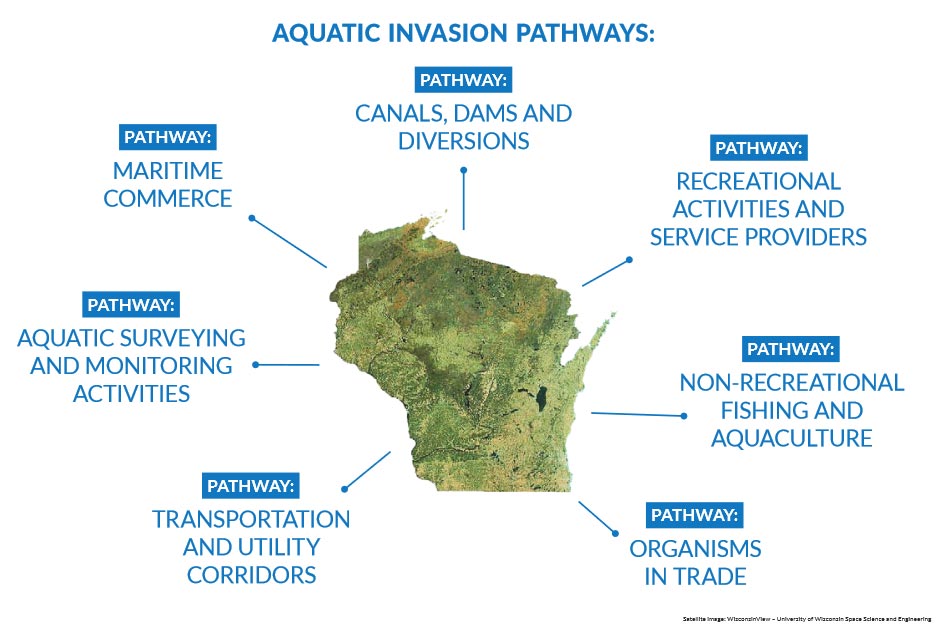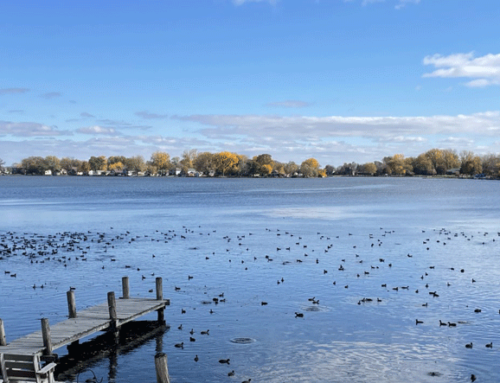Transportation and Utility Corridors: How the Ways We Get From Place to Place and Its Respective Upkeep Can Transport Invasive Species
Transport pathways are the means by which aquatic invasive species (AIS) have been introduced to and spread across Wisconsin. The number of pathways have continued to grow as new technologies allow for faster movement of goods and services than ever before in history.

Every month, we will be putting a spotlight on the different pathways aquatic invasive species can reach new waterways. The next installation of this monthly series focuses on the pathway of transportation and utility corridors such as roadways and railways.
Roads and railways can be a means by which aquatic invasive species (AIS) spread. While these avenues of movement are typically focused on terrestrial invasive species, certain wetland invasive species can also find a foothold in our transportation corridors (roads, trails, railways, etc.). Invasive Phragmites and Purple loosestrife are often found living along roads and railroad tracks in ditches. As they spread along the road/track, they can decrease native abundance or even endanger human lives by blocking views around curves or increasing the chance of fire.
As road construction or maintenance crews work in these areas, they can become vectors by which AIS are transported along this corridor pathway. In addition, mowing activities used along highways can  create disturbed habitat in which invasive species can quickly establish. The mowing activities themselves can also transport these wetland invasive species further along the road or railroad track, especially if mowing occurs when the plants have produced seeds. There are currently best management practices in place that help decrease the chance of the spread of invasive species. However, more could be done to ensure all groups that help maintain our roadsides and railways are provided relevant training to further reduce the chance of invasive species spread. Trainings such as this are an essential aspect of the Winnebago Waterways Lake Management Plan’s Aquatic Invasive Species Strategy and are part of the implementation process of the Lake Management Plan.
create disturbed habitat in which invasive species can quickly establish. The mowing activities themselves can also transport these wetland invasive species further along the road or railroad track, especially if mowing occurs when the plants have produced seeds. There are currently best management practices in place that help decrease the chance of the spread of invasive species. However, more could be done to ensure all groups that help maintain our roadsides and railways are provided relevant training to further reduce the chance of invasive species spread. Trainings such as this are an essential aspect of the Winnebago Waterways Lake Management Plan’s Aquatic Invasive Species Strategy and are part of the implementation process of the Lake Management Plan.
Questions? Comments? Contact Chris Acy, the AIS Coordinator covering Brown, Outagamie, Fond du Lac, Calumet, and Winnebago Counties at (920) 460-3674 or chris@fwwa.org!
Follow the Fox Wolf Watershed Alliance’s Winnebago Waterways Program on our Winnebago Waterways Facebook page or @WinnWaterways on Twitter! You can also sign-up for email updates at WinnebagoWaterways.org.
Winnebago Waterways is a Fox-Wolf Watershed Alliance program. The Fox-Wolf Watershed Alliance is an independent nonprofit organization that identifies and advocates effective policies and actions that protect, restore, and sustain water resources in the Fox-Wolf River Basin.
Photo Credit: Camden County, WI AIS Management Plan





